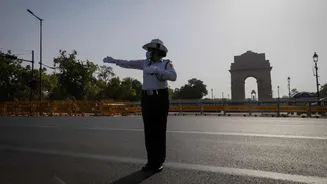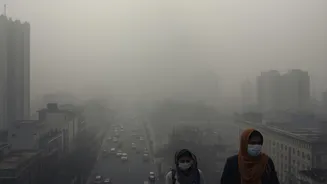Addressing Air Quality
Delhi is taking proactive steps to deal with its ongoing air pollution problem. The decision to initiate artificial rain on October 29th is a key part
of this strategy. This intervention is designed to improve the quality of air by removing pollutants. The announcement, made by Rekha Gupta, shows the government's commitment to finding and using innovative solutions to safeguard public health and well-being. This innovative measure seeks to provide relief to citizens during periods of high pollution, reflecting the city's continuous efforts to ensure a healthier atmosphere for its residents. The government is attempting to address pollution concerns through concrete, practical actions.
The Artificial Rain Plan
The artificial rain, or cloud seeding, is scheduled for implementation on the 29th of October. This process involves introducing substances into clouds to cause rainfall. The goal of this technique is to wash away pollutants, thereby cleansing the air. The initiative is a direct response to the escalating levels of pollution that Delhi faces, especially during specific times of the year. The timing of this action is deliberate, designed to offer quick relief during a critical pollution phase. It shows the government's readiness to use cutting-edge scientific methods in its environmental protection efforts. This measure provides a tangible step toward bettering air quality by actively reducing harmful particles.
Rekha Gupta's Role
Rekha Gupta has been identified as a key figure in this campaign against pollution. Her involvement signifies her leadership and dedication towards this cause, highlighting her role in the city's environmental management. Gupta's active participation is a testament to the importance Delhi places on tackling air pollution. The announcement by Gupta emphasizes the commitment of authorities to actively manage and improve the environment. Her direction of this effort emphasizes the proactive nature of the initiative, demonstrating the city's dedication to improving the welfare of its residents. Her role underscores the necessity for leadership and commitment when dealing with environmental challenges.
Impact and Expectations
The application of artificial rain aims to significantly decrease the amount of pollutants in the atmosphere, creating a cleaner atmosphere for the people of Delhi. The expected result includes a marked enhancement in air quality, offering immediate benefits to the city's residents. This move is anticipated to deliver considerable health benefits and improve the overall living conditions within the city. The project's success is anticipated to not only enhance air quality temporarily but also set an example for other cities struggling with similar environmental concerns. The implementation of this technology shows Delhi's goal to improve environmental conditions, and highlights the potential for similar solutions elsewhere.
















